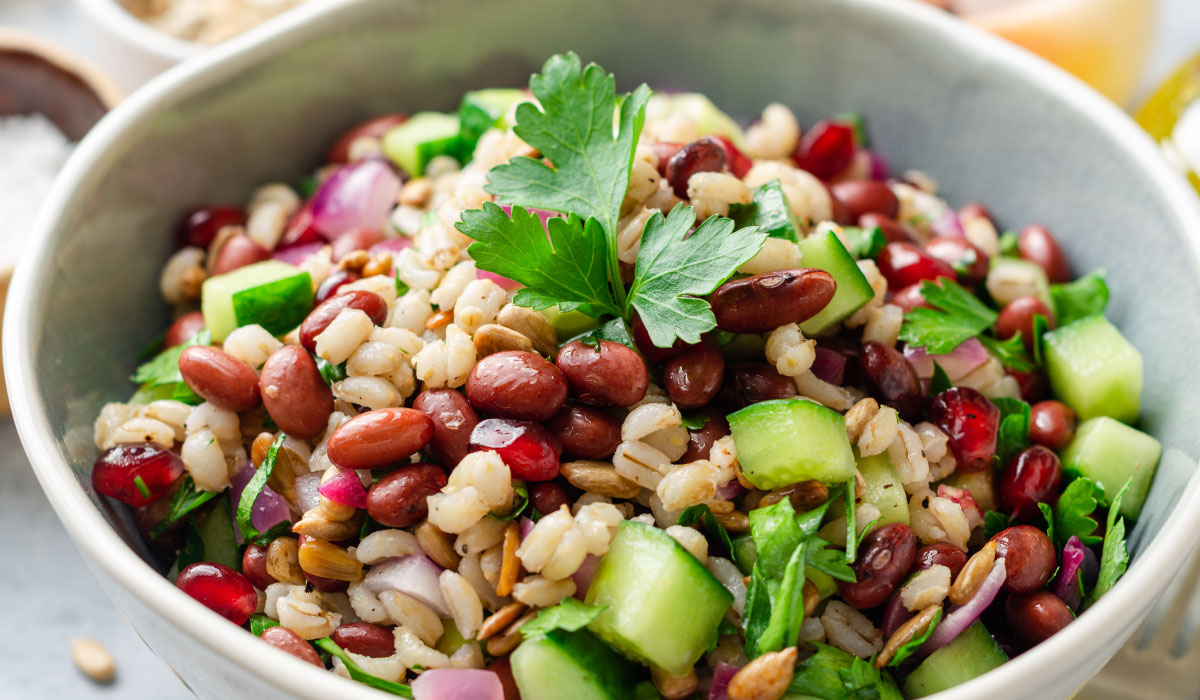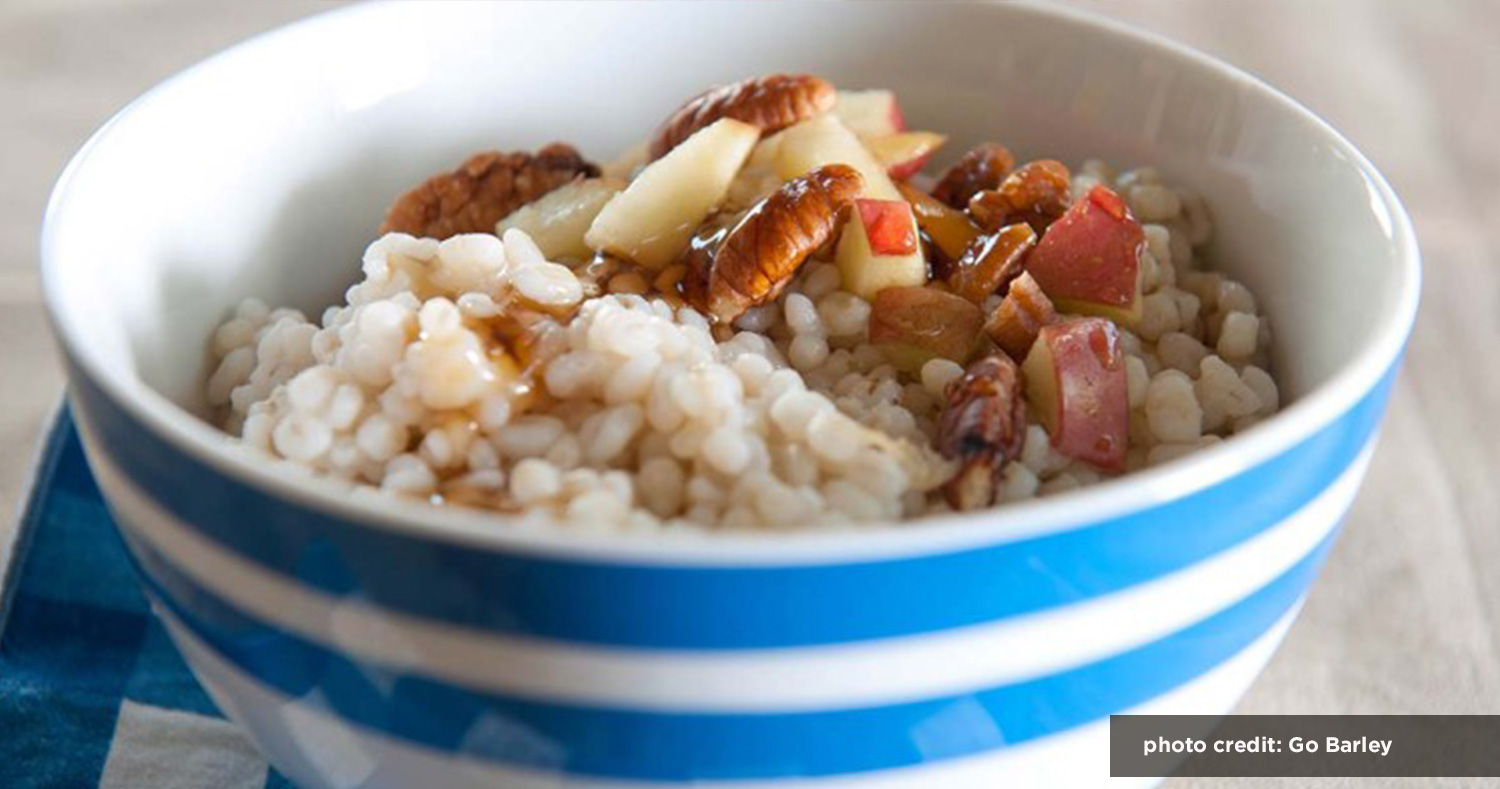
Barley is a home-grown favourite for 2024
Barley is a home-grown favourite. It has a long history as part of Canada’s rich and vibrant agriculture scene. In fact, barley is the fourth largest crop grown in Canada. I’ve been writing about this versatile ingredient for 15 years. When it comes to versatility, barley has endless possibilities due to its neutral colour, slightly nutty flavour and appealing texture. Plus, barley fits into the current food trends of ingredients taking the spotlight and classic comfort – nostalgia. Let’s explore my top reasons why barley is a home-grown favourite for 2024.
Health benefits
Barley is a delicious grain packed with nutrients, including fibre and plant-based protein. It contains several vitamins and minerals including niacin, thiamine, selenium, iron, magnesium, zinc, phosphorus and copper.
Barley is one of Canada’s top heart-healthy foods. Over a decade ago, Health Canada approved the health claim, “The consumption of at least three grams of beta-glucan from barley grain products per day helps reduce cholesterol, which is a risk factor for heart disease.”
Let barley love your heart, as just a ½ cup (125 ml) of cooked pearled barley supplies 65 per cent of the daily amount of beta-glucans shown to lower cholesterol. Beta-glucans have prebiotic qualities which makes barley good for digestive health. Also, due to the high amount of beta-glucan, barley is known as a healthy, complex carbohydrate with a low glycemic index rating. This is excellent news, especially for people managing diabetes.
Culinary versatility
Let’s go beyond the nostalgic beer and beef & barley soup. Barley is a versatile grain offering classic comfort with a delicious taste and appealing texture. Super easy for home use. It can be used in breakfast dishes, snacks, entrées for supper and dessert. What’s old is new again!
Barley comes in a variety of formats. Whole grain or hulled barley leaves most of the bran layer intact. It is tougher and takes longer to cook. As a result, for home use, the common types are pot and pearl barley. Pot barley is lightly polished in a pearling machine to remove the hull and some bran layer. It is still considered a whole grain. Therefore, use pot barley like any other whole grain in casseroles, soups, salads and side dishes. Pearl barley is heavily polished to remove both the hull and the bran layer. It is not considered a whole grain, however the fibre is still distributed throughout the kernel. It can be substituted for most recipes calling for pot barley, if you need it to cook in less time with a tender texture.
Quick cooking barley is made from hull-less barley and is precooked then dried. It can be cooked in only 10 minutes on the stovetop. Barley flour is made from the kernel, is used in bread and baked goods. It is available at most bulk baking supply stores. Barley grits are made from cutting the kernel into several pieces. Barley flakes are created by streaming, rolling and drying the barley kernels. Both grits and flakes have a niche market and aren’t often used in common home recipes.
Barley malt is a popular format for industry use. From vinegar and alcohol to chocolate and baked goods, learn more about how barley malt is used in this Canadian Food Focus article.
Final thoughts for barley as a home-grown favourite for 2024
Barley is a home-grown favourite. From its health benefits to its versatility as an ingredient, it continues to be part of Canada’s rich and vibrant agriculture scene. Keep an eye out for this classic comfort whole grain popping up on menus in 2024.


